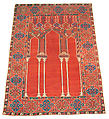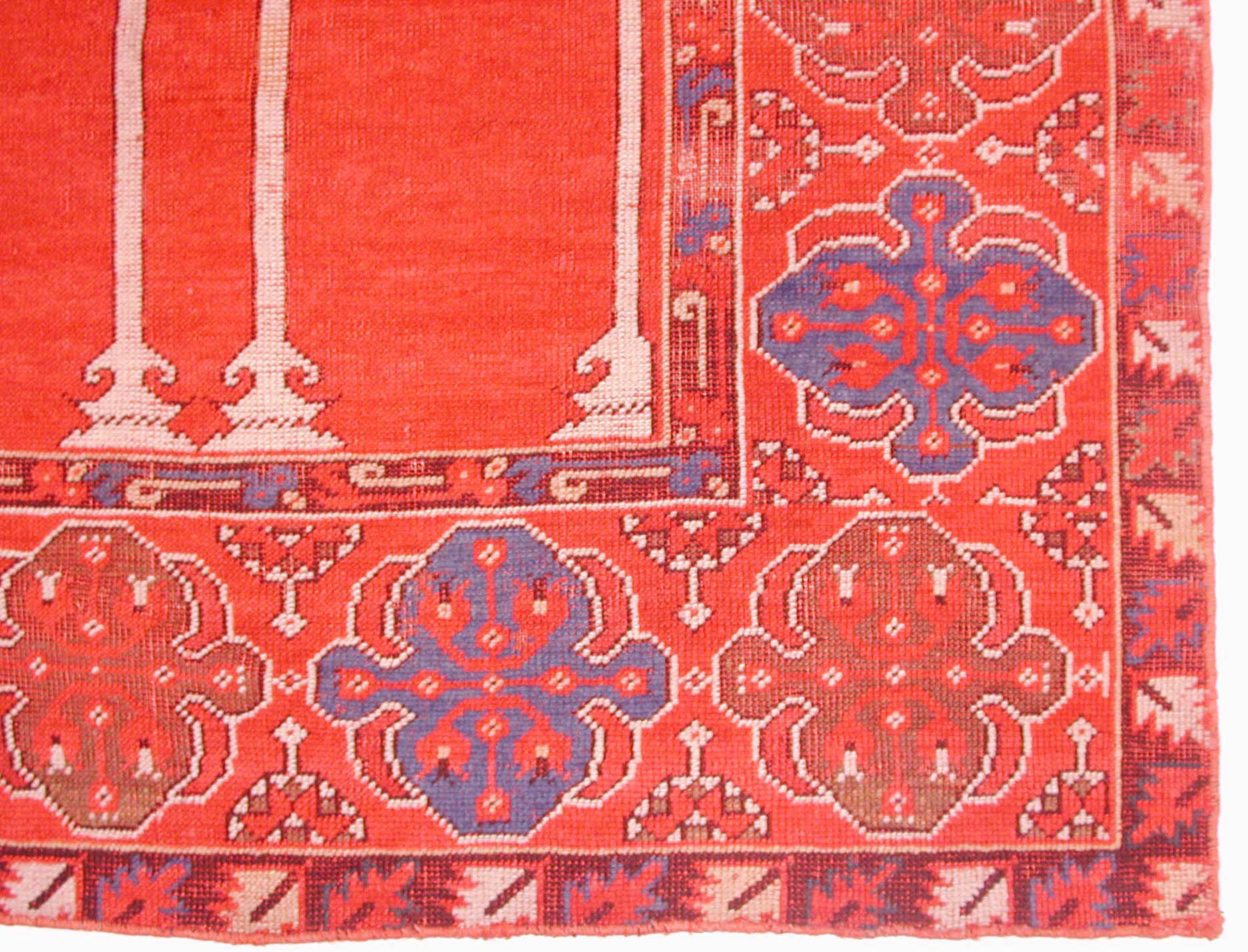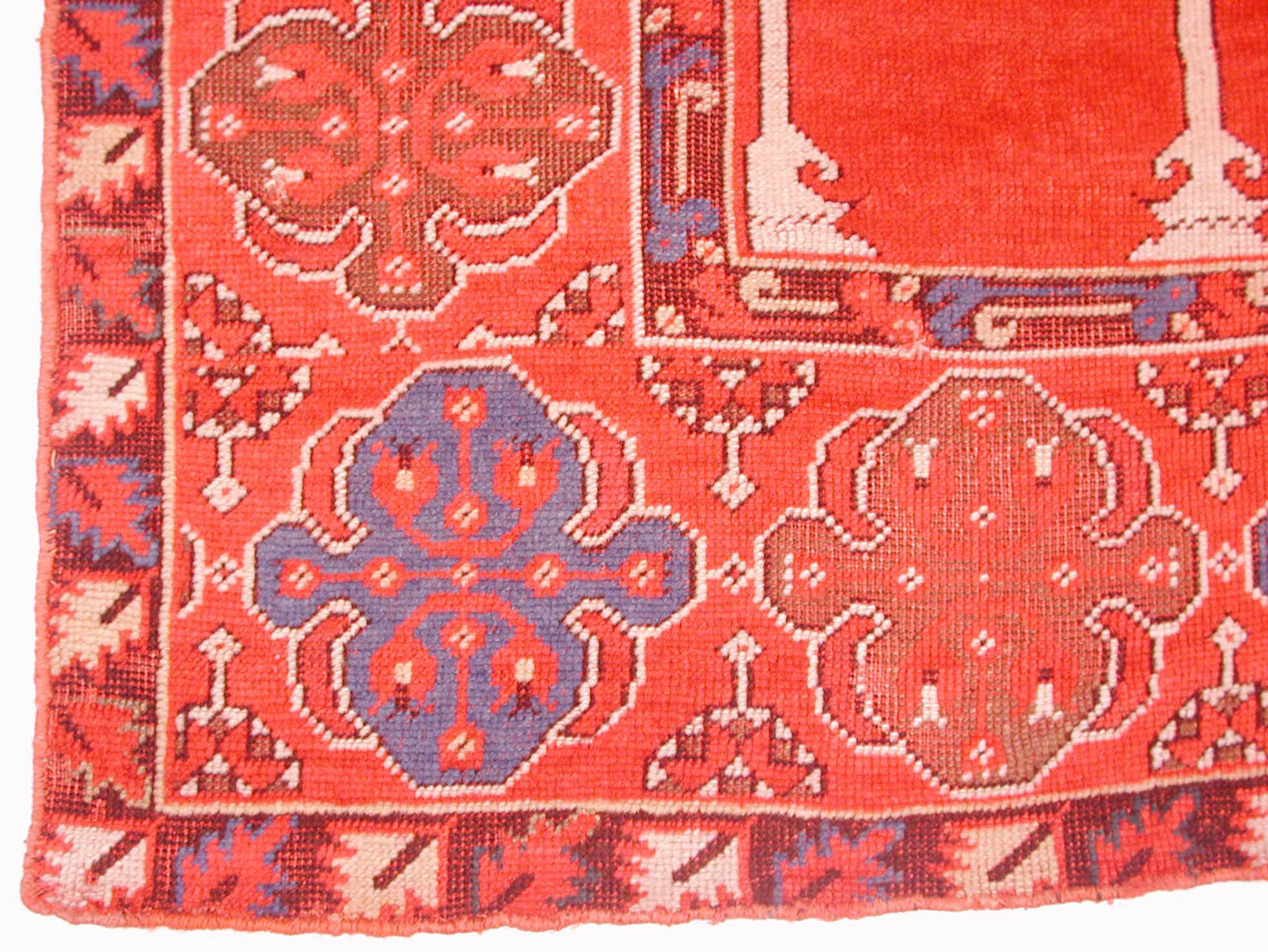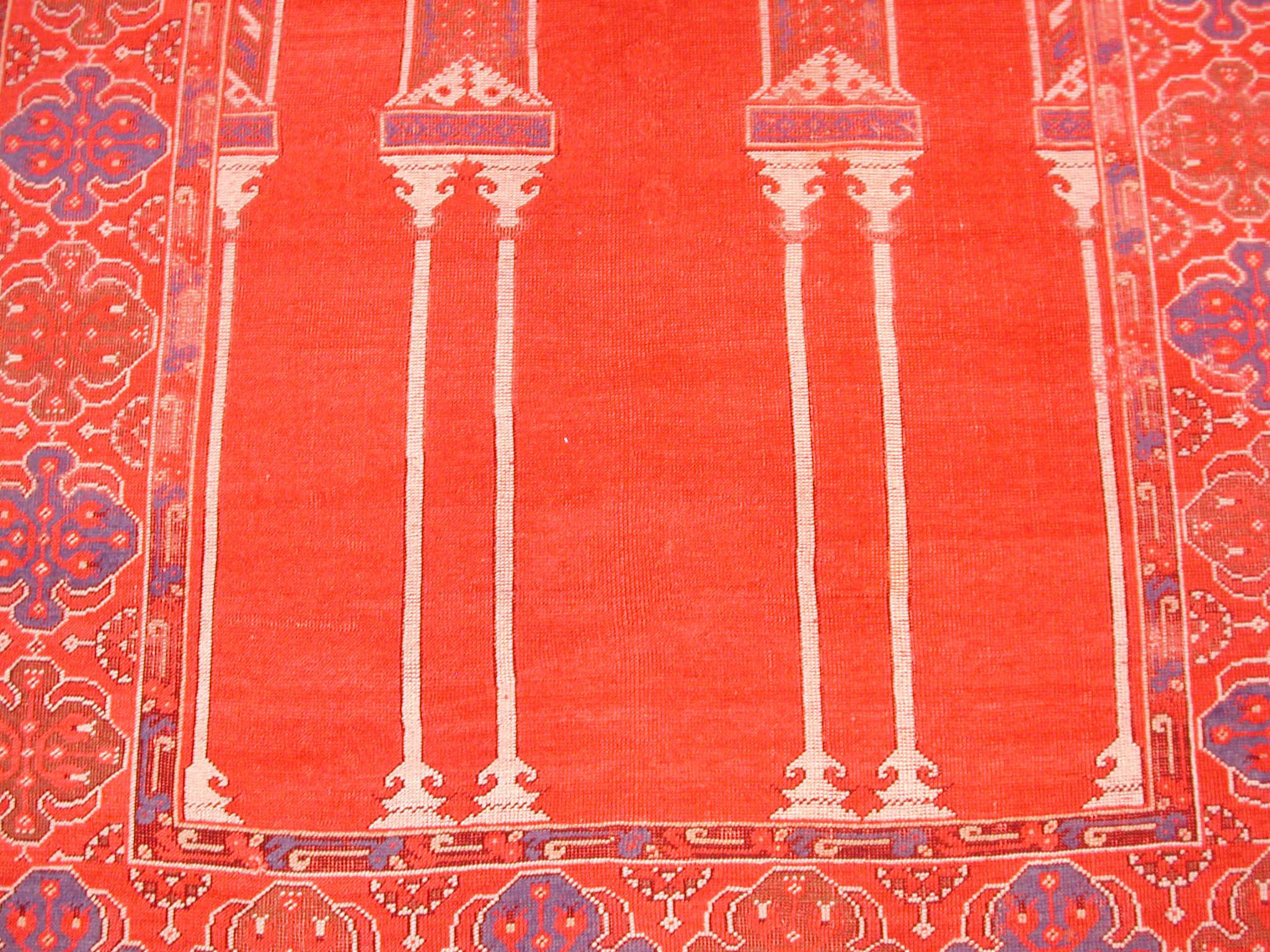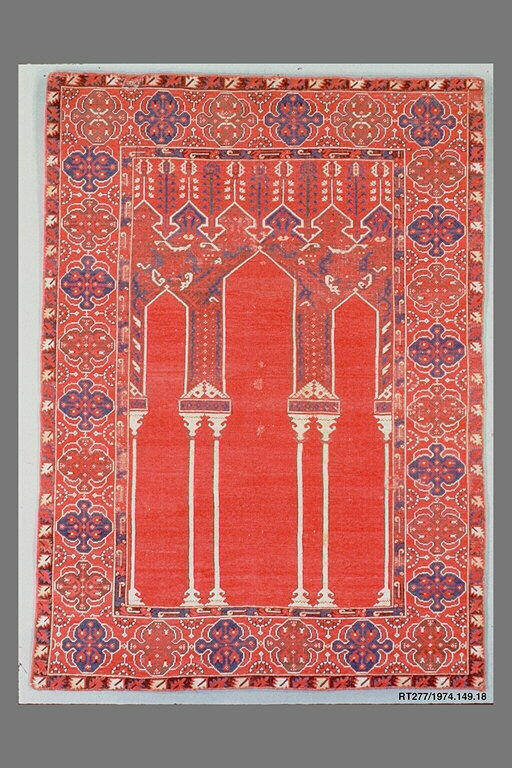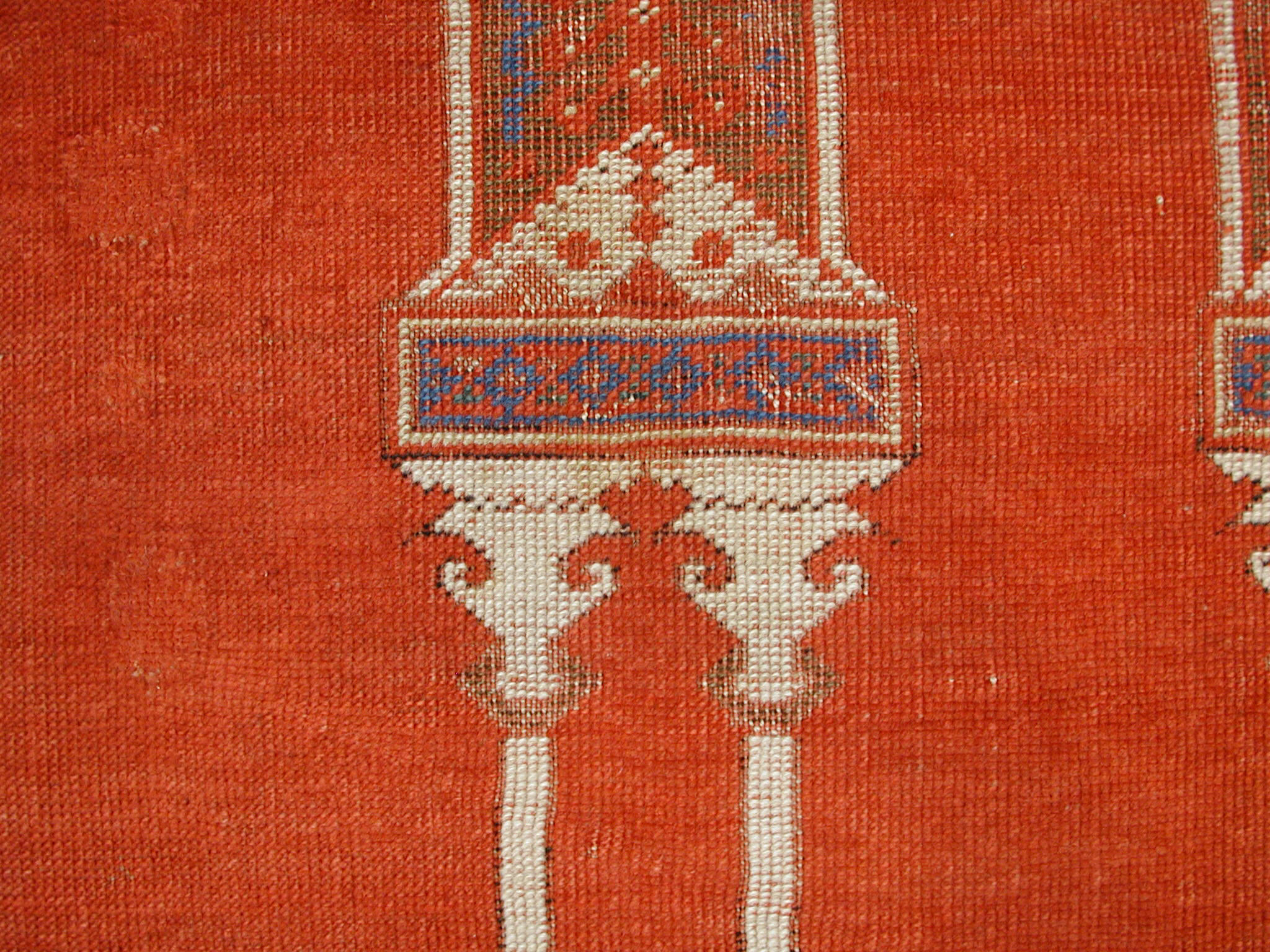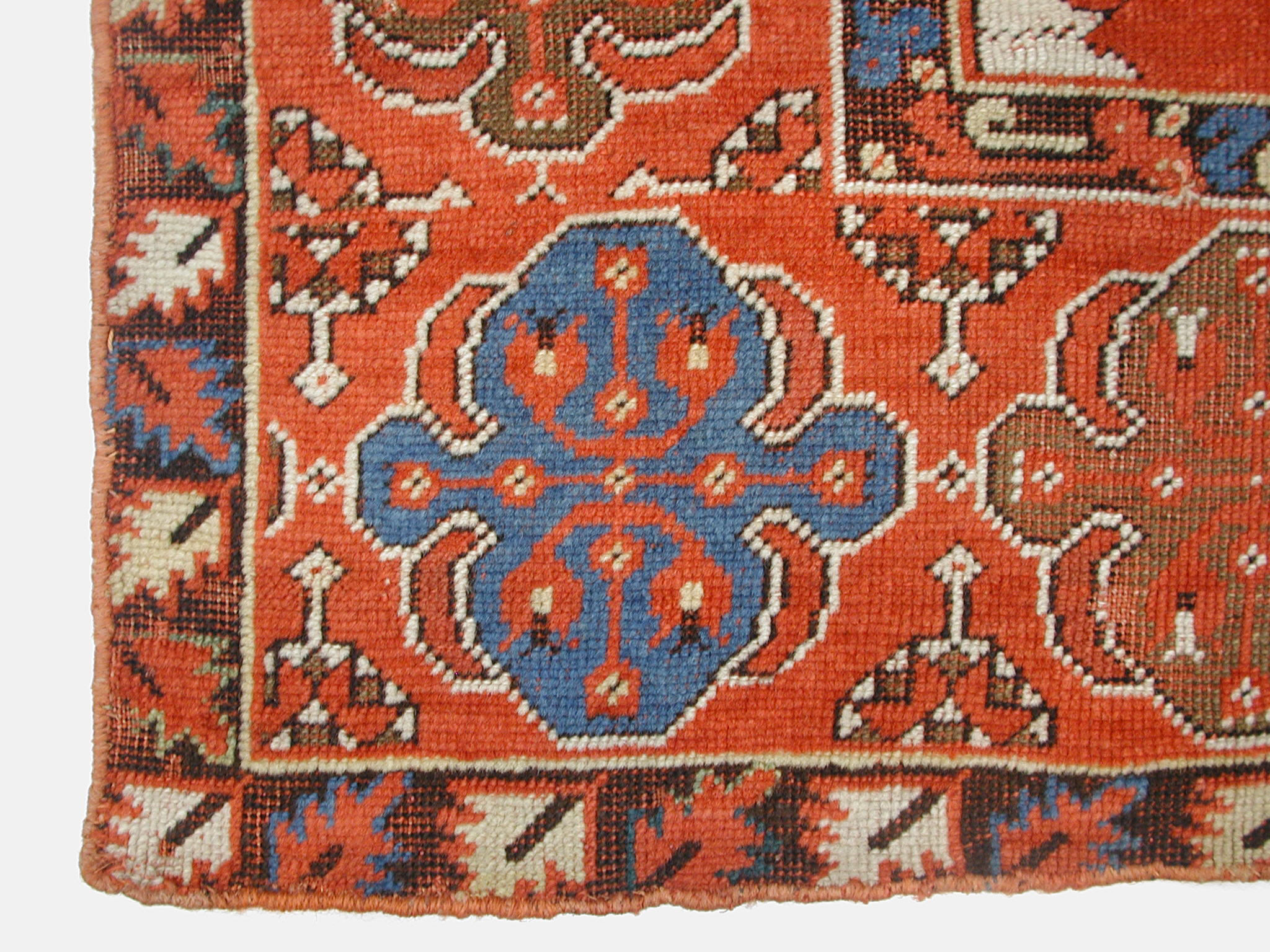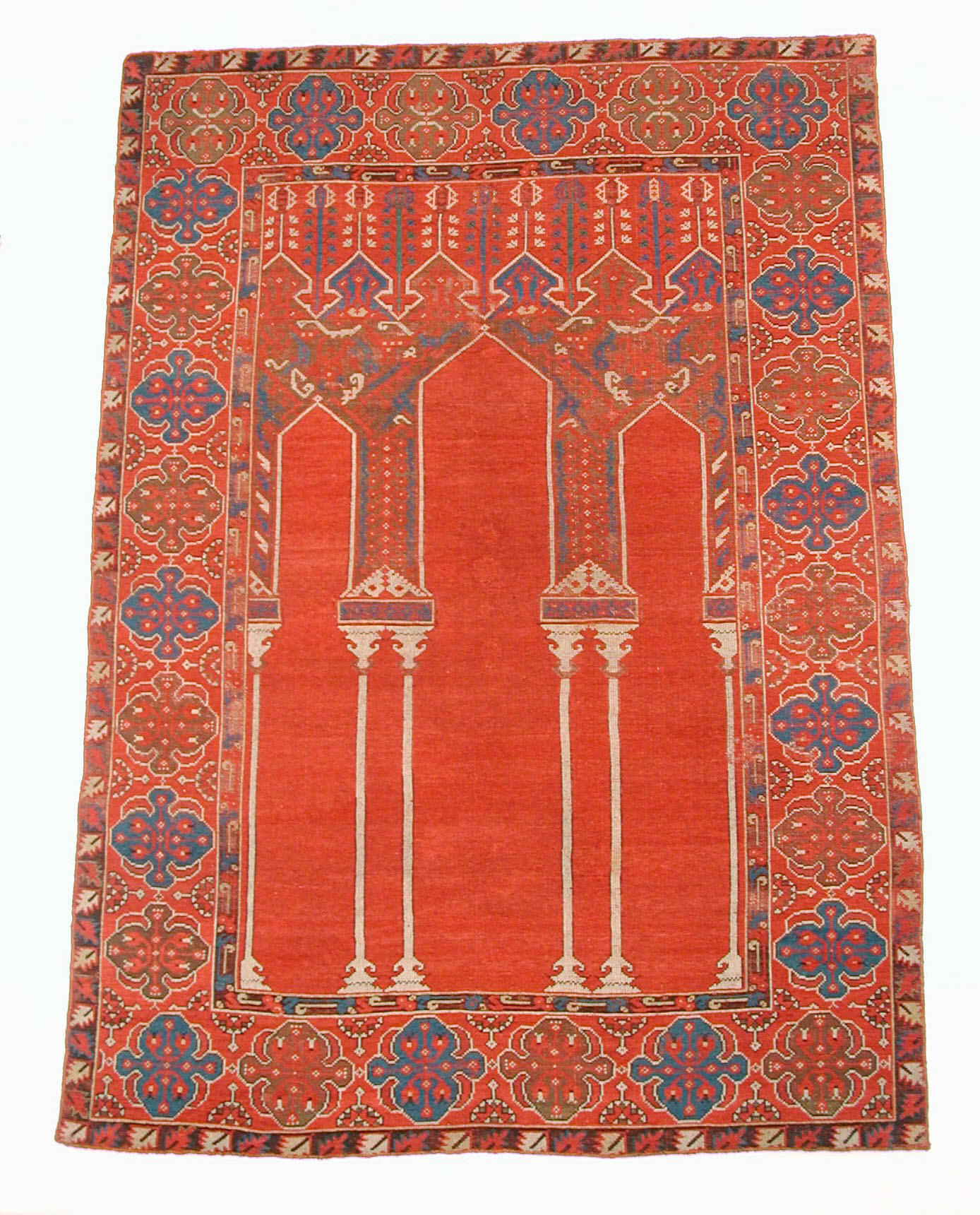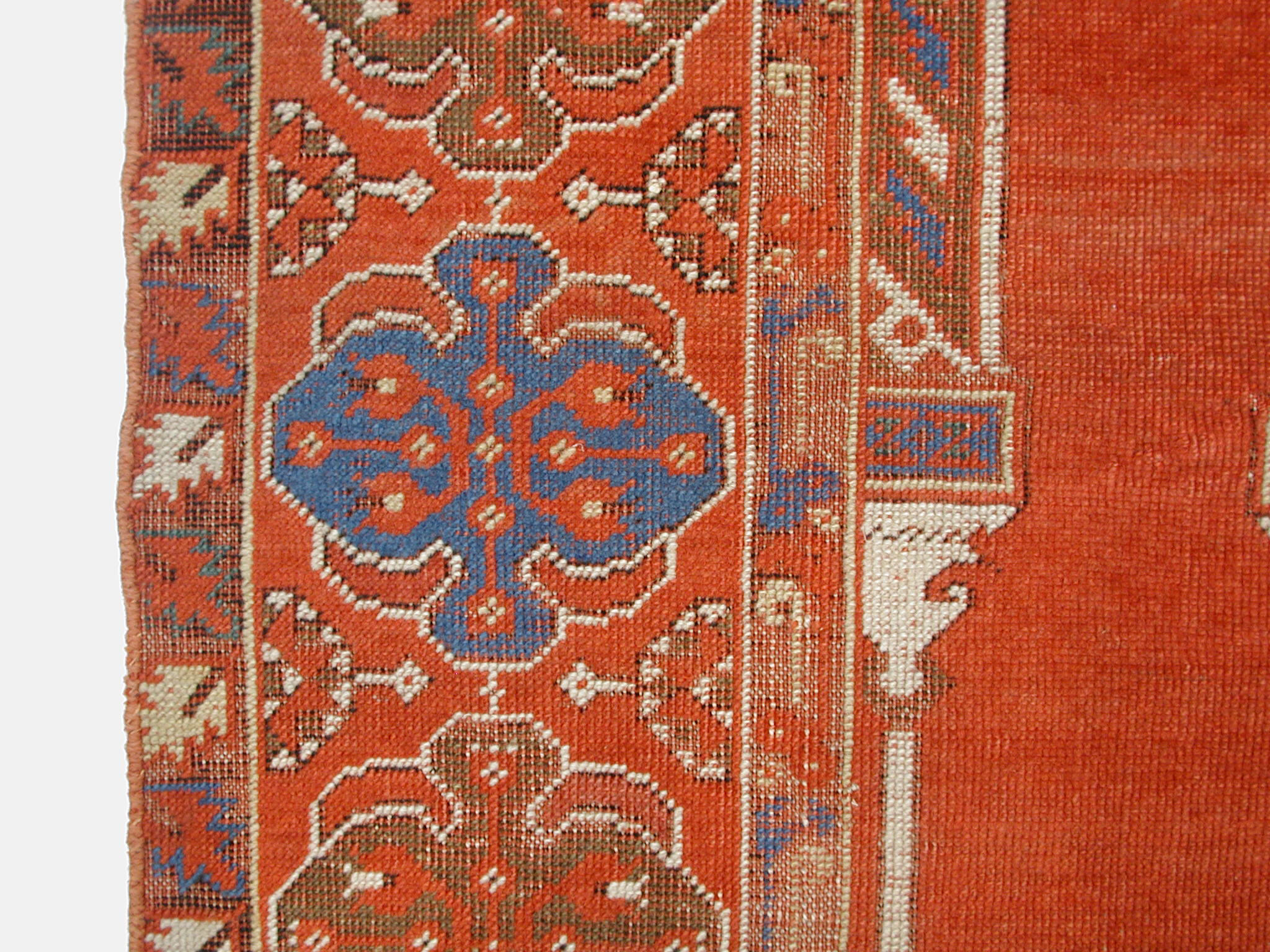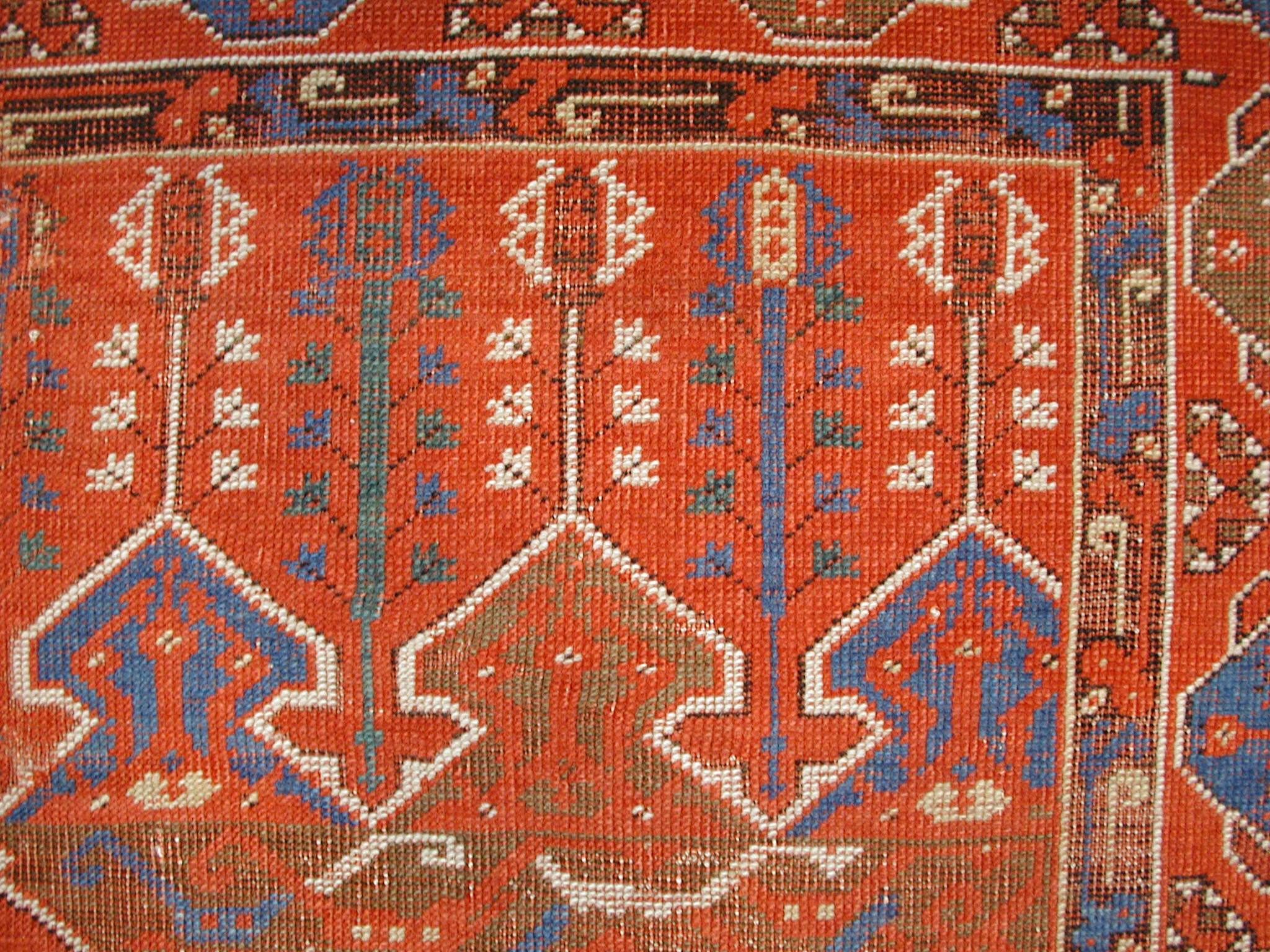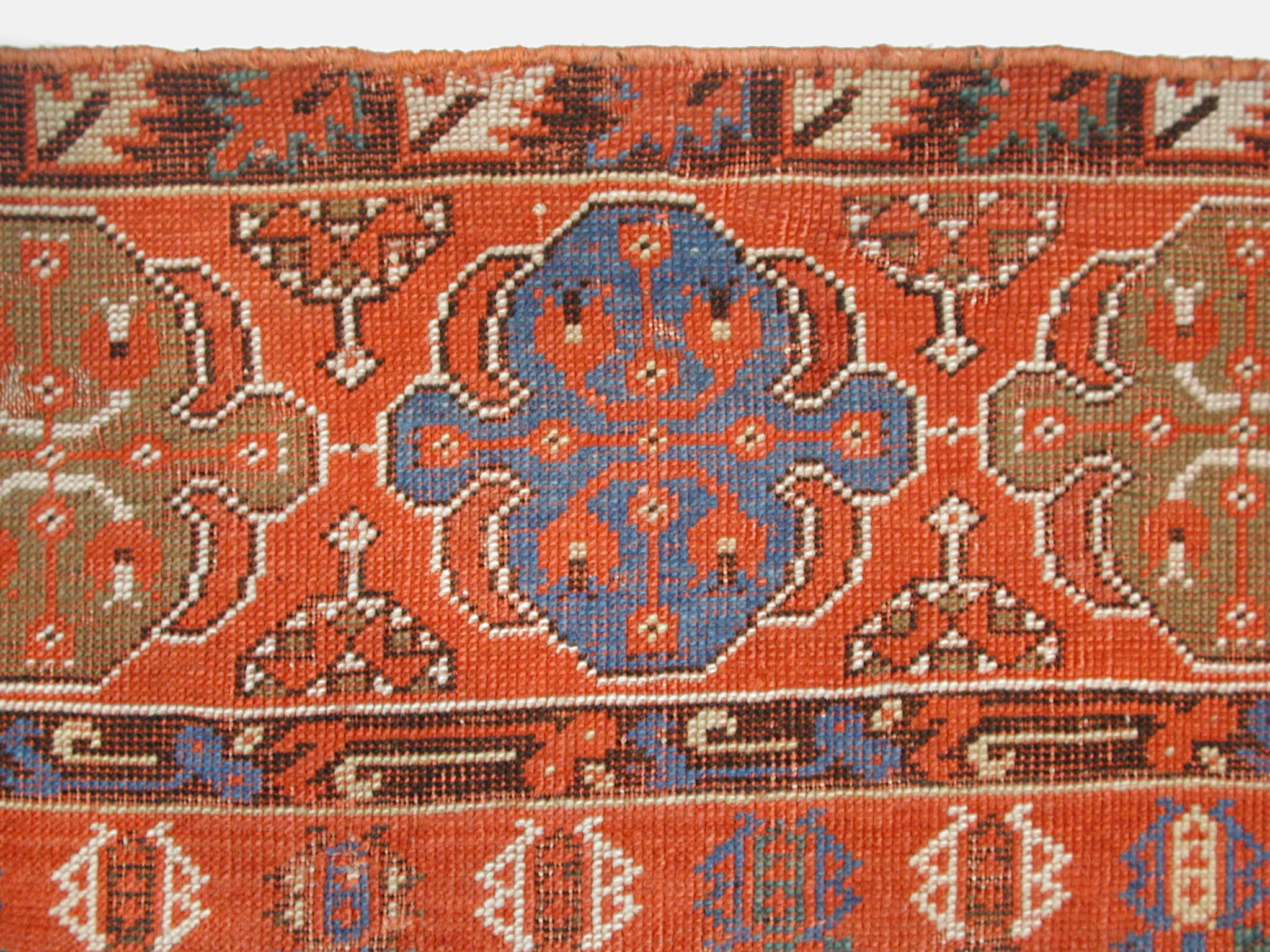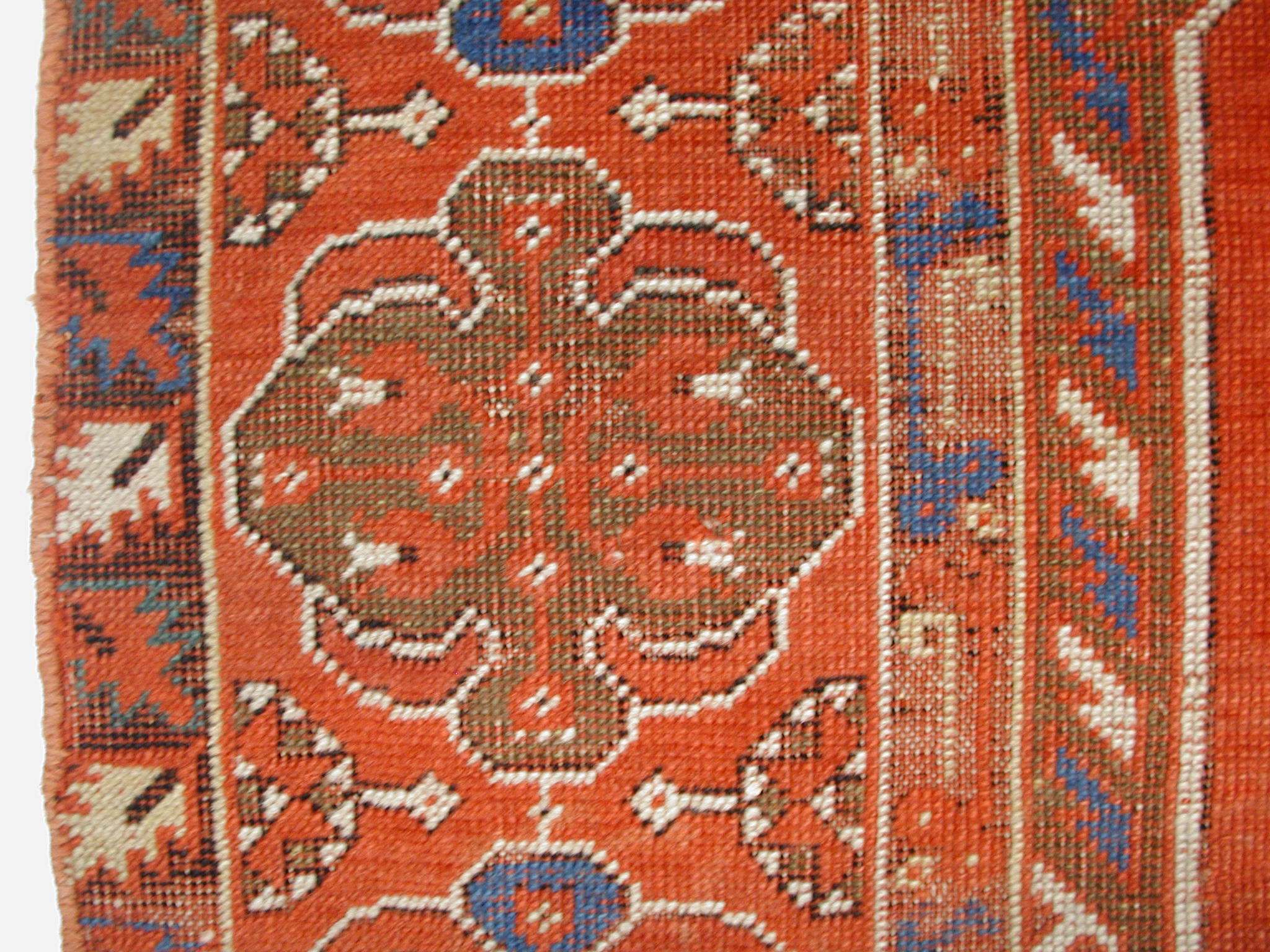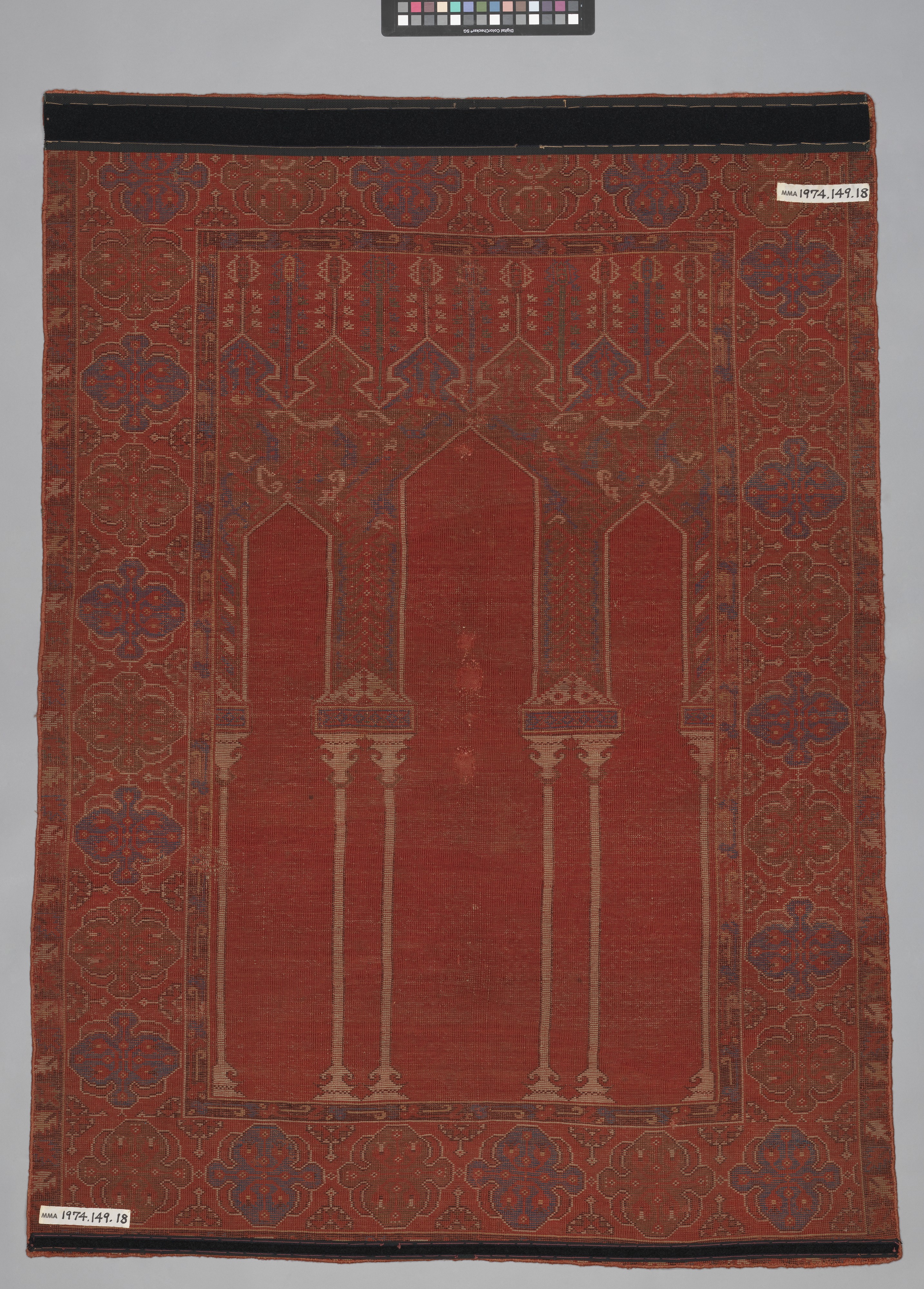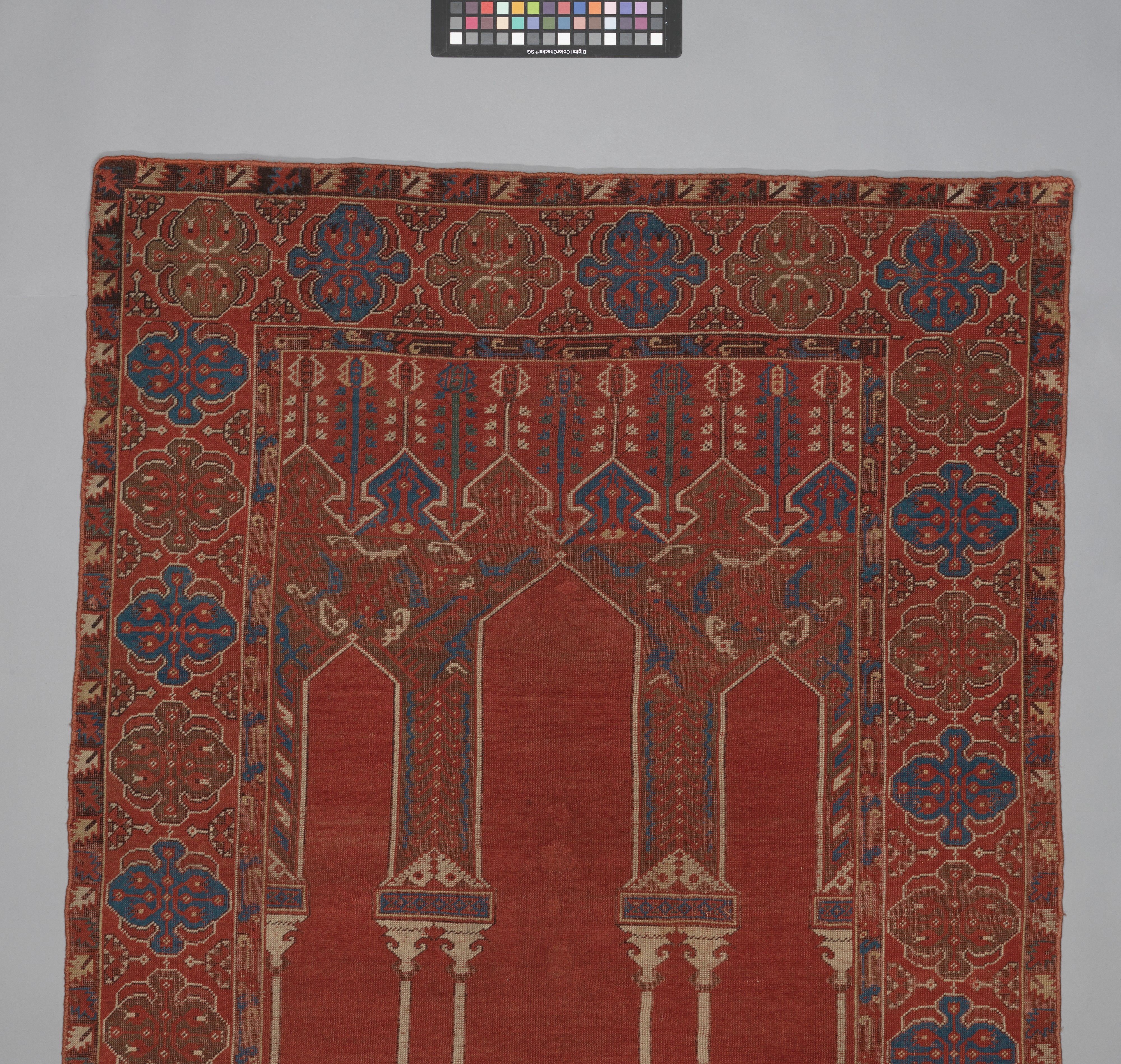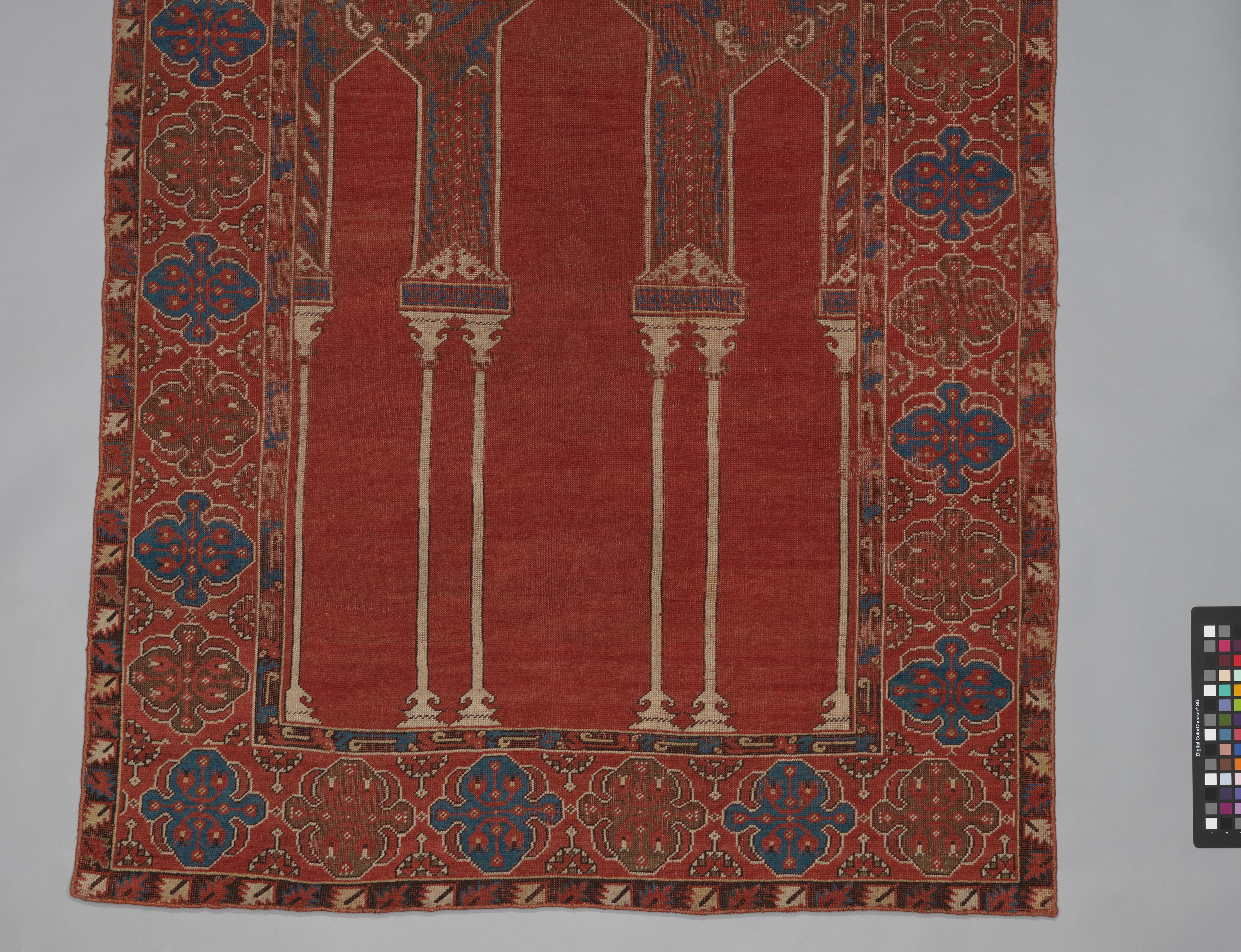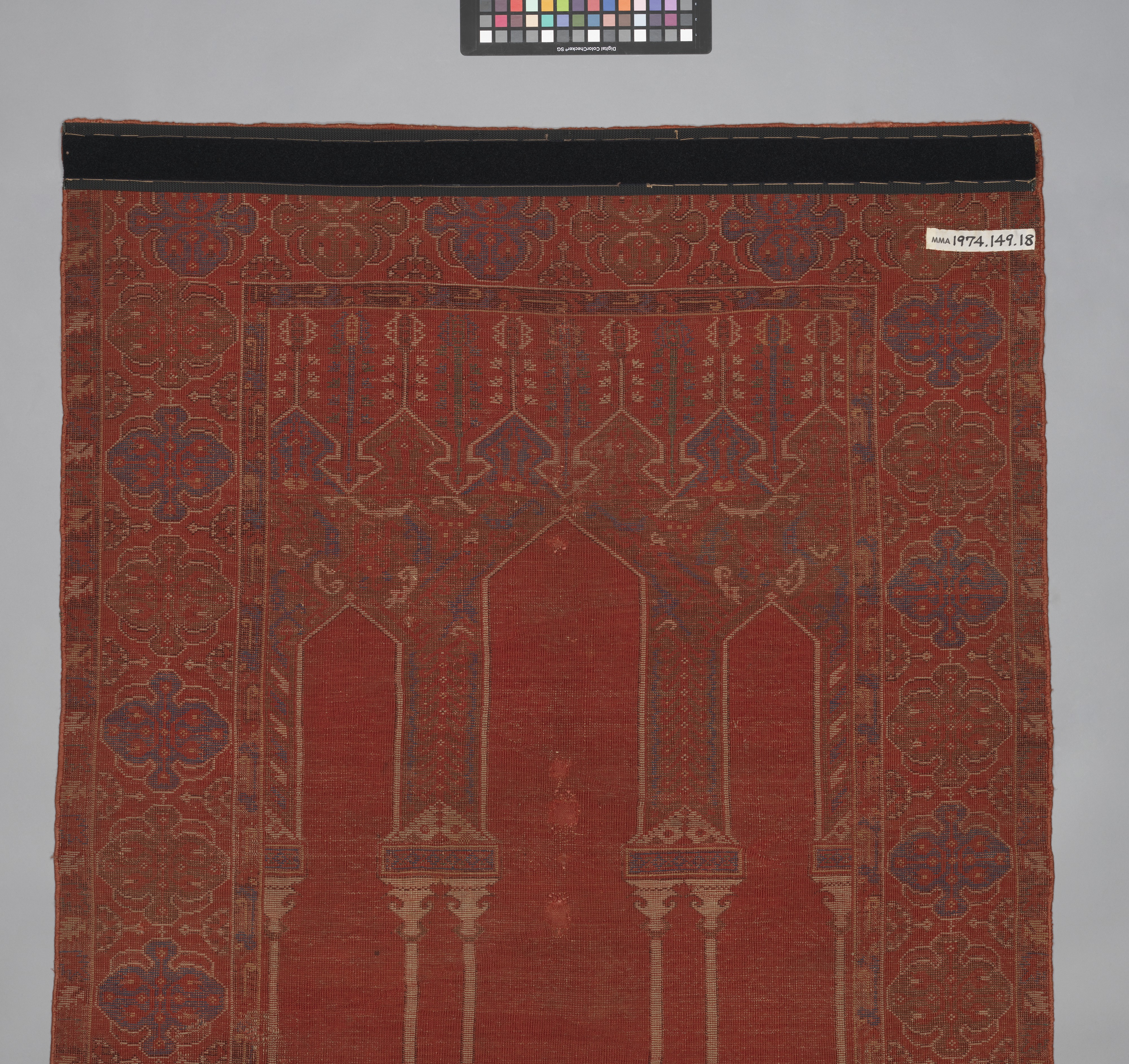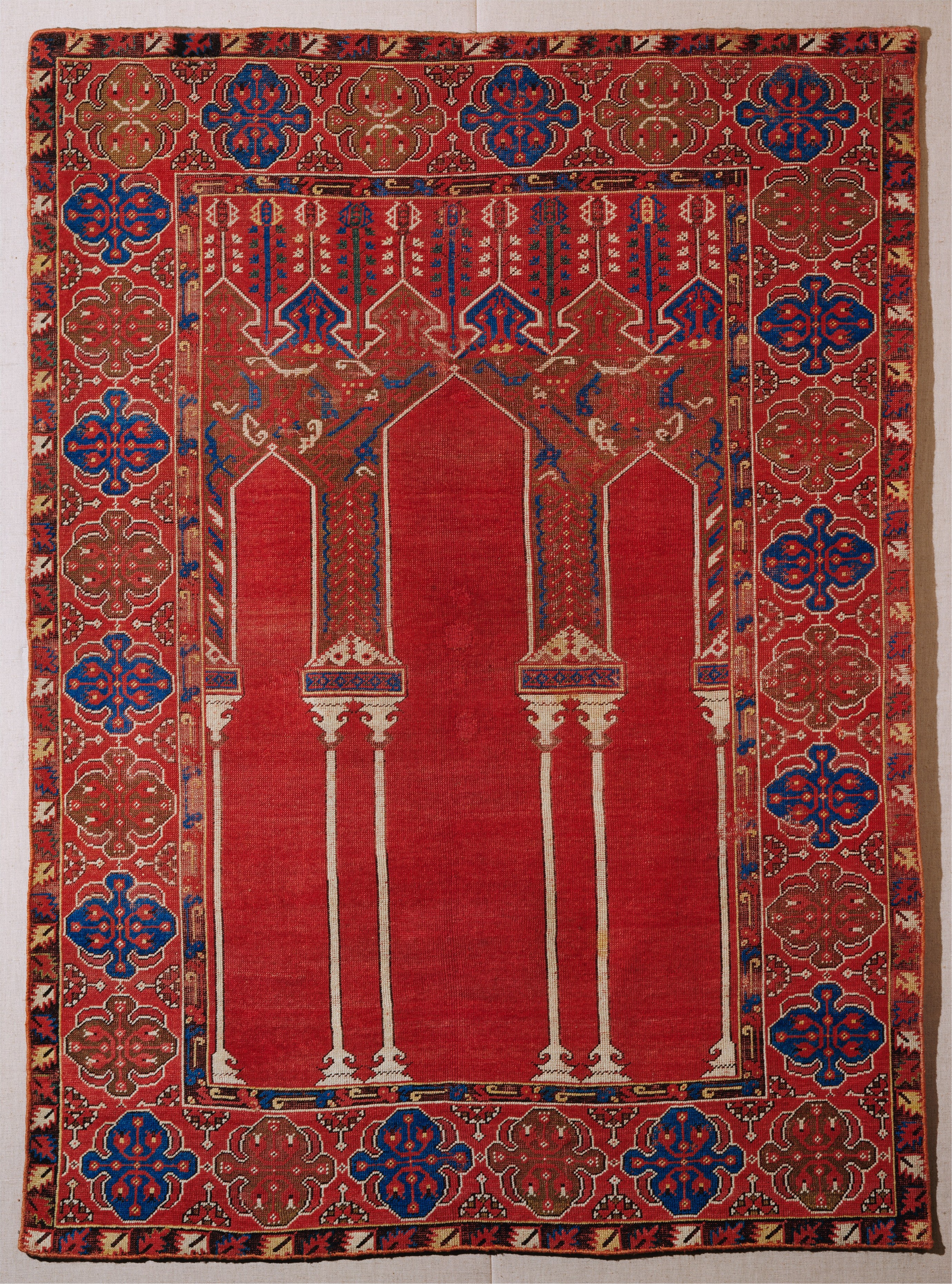Prayer Rug with Triple Arch Design
Not on view
Prayer rugs or "seccade" carpets were among the most popular rugs woven in Anatolia. Common features are the characteristic niche design evoking the mihrab or prayer niche and the smaller size that makes such carpets suitable for individual use. Departing from classical Ottoman court carpets, distinct designs and styles were created over time in villages and smaller towns of Anatolia, which explains the existence of a variety of types. This example from Ladik, near Konya in central Turkey shows a stylized niche with a triple arch – each arch shaped in triangles, supported by double columns. Poly-lobed medallions are repeated in the border, which adds polychrome accents in green, blue, red and white. While the stylized design and motifs, as well as the palette dominated by deep red are typical for carpets woven in Ladik during the later Ottoman period, the overall composition recalls the famous Ottoman court prayer rug ("Ballard double column prayer-rug", no. 22.100.51). The series of floral motifs at the top resemble hyacinths, one of the many flowers featured in classical Ottoman art from the sixteenth/seventeenth centuries.
Due to rights restrictions, this image cannot be enlarged, viewed at full screen, or downloaded.
This artwork is meant to be viewed from right to left. Scroll left to view more.
